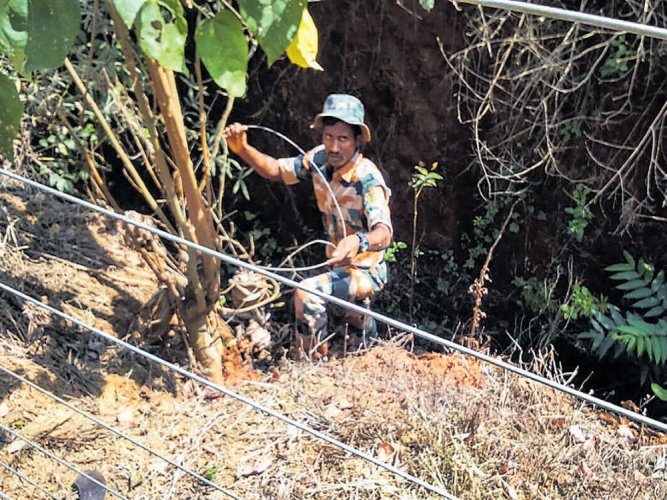Angul: Even as a detailed post-mortem report of the death of three-year-old Mahavir or MB2 is yet to arrive, animal lovers demanded the removal of snares spread across Satkosia Tiger Reserve to prevent any further loss of wildlife.
Locals also demanded the forest department to clear all snares inside the Reserve forest. Being hub for various wild animals, the poachers have strewn hundreds of nooses to capture wild boars, deer and other herbivore animals.
Suspecting that Mahavir died due to infection caused after getting trapped in a ensnare, locals demanded immediate step in this regard before it further claimed another wild life.

Preliminary probe reveals the male tiger Mahavir or MB2 that died a few days back, within four months of being translocated to Satkosia from Kanha Tiger Reserve in Madhya Pradesh reveals the Royal Bengal Tiger died due to injury on its neck by a snare.
The injury is believed to have been caused by a metal trap used by poachers in the area.
As per wildlife experts, poachers use improvised wire traps made of rust proof iron that pose danger to the animals. They also use the cables of motorcycles brakes, as they are very strong.
Poachers place the snares in areas frequented by prey animals such as wild boar, sambar and deer. The poachers observe the movement of animals, especially herbivores for days before planning the snares.
“The wires are fixed across several bamboo sticks, which are arranged in a way so as to withstand the resistance of animal and create a tight grip,” said a wildlife officer.
The more the animal struggles to escape the trap, the more severe is the injury. Most of the animals remain entrapped and finally die of their wounds as well as hunger.
Only in rare cases does the animal escape, but it suffers debilitating injuries that prevent it from hunting, eventually causing it to die of starvation or infection, that is suspected to have happened to Mahavir.
It is almost impossible to known how many snares are being set up on a daily basis in Satkosia. Moreover, many important reserve forests and habitats lack adequate resources for protection of animals.
Taking the issue seriously, locals urged tiger-range authorities to strengthen anti-poaching efforts and crack down on severe wildlife snaring crisis that is threatening wildlife in reserve forests.

“Removing these silent traps is not enough. Rangers on the ground must be supported by greater resources and strong legislation to take action against illegal poachers with snares,” a local said.
Meanwhile, the team of wildlife experts from the Wildlife Institute of India and the National Tiger Conservation Authority (NTCA), that visited the site where Mahavir was found dead, returned after taking note of the circumstances leading to the death of the animal.
It will file a report soon. The team comprised WII scientist K Ramesh, who has been overseeing the tiger translocation project in the state since the beginning, and inspector general (NTCA) Amit Mallik.
PNN






































